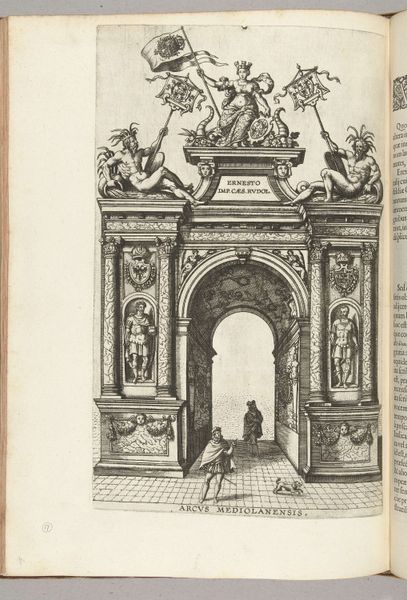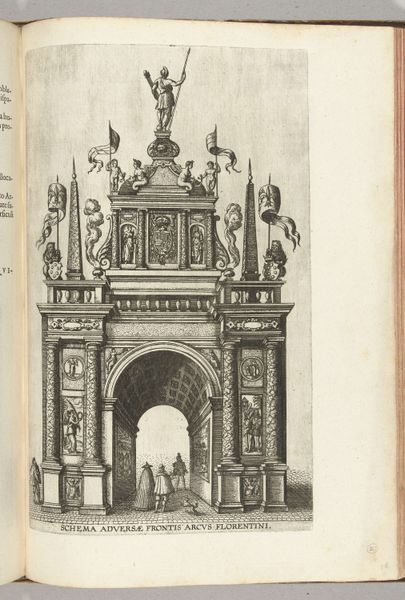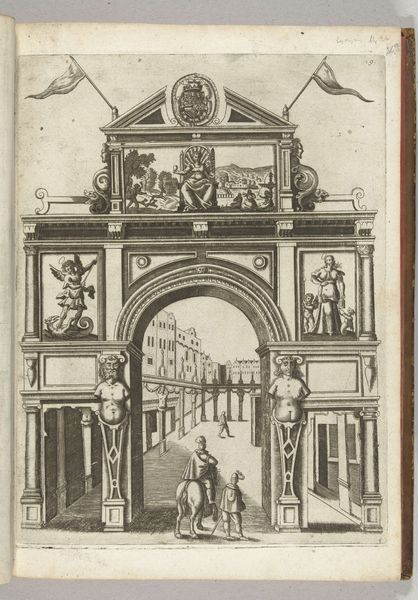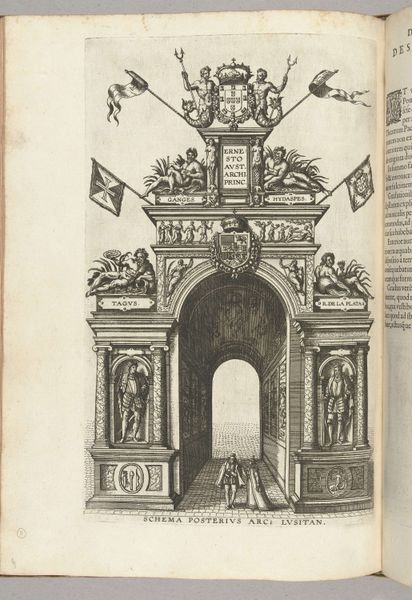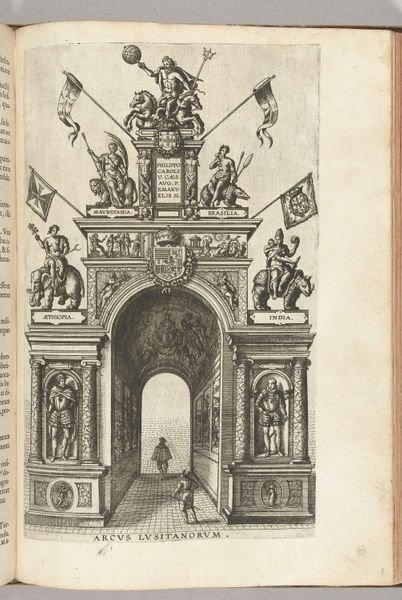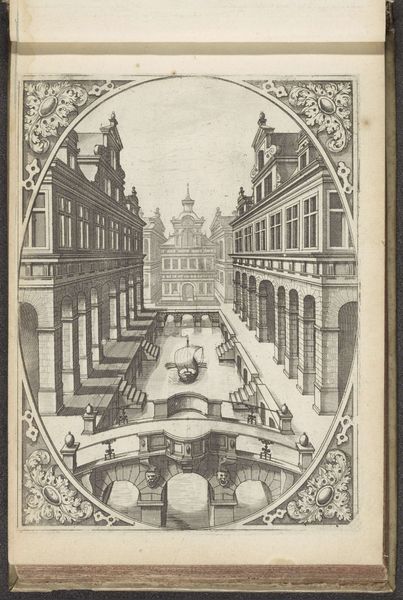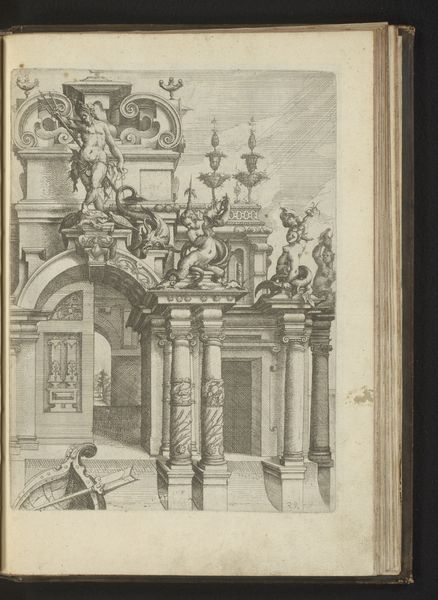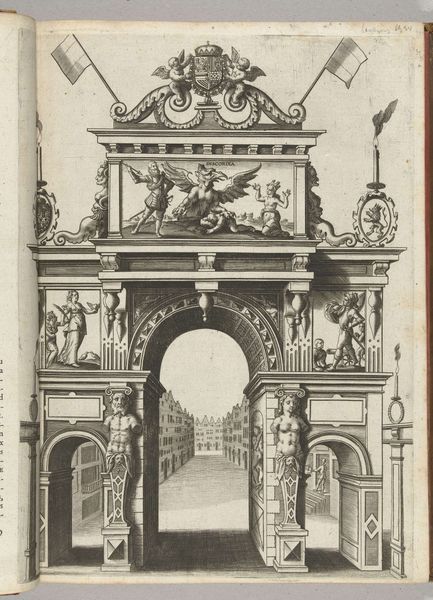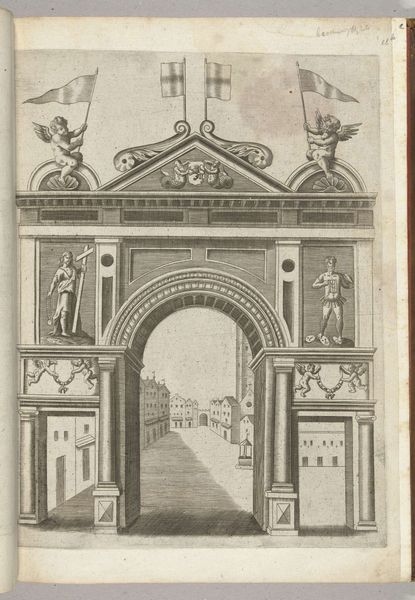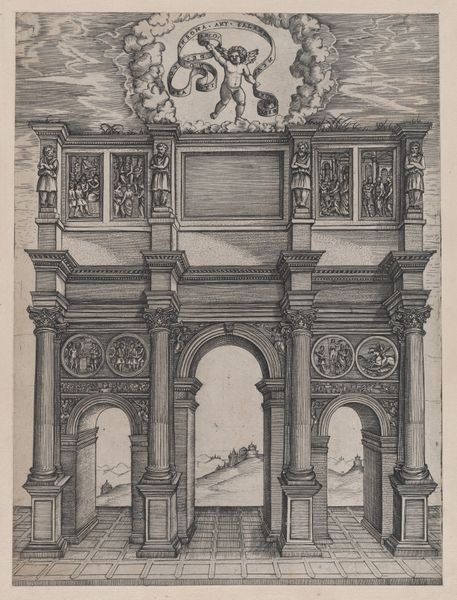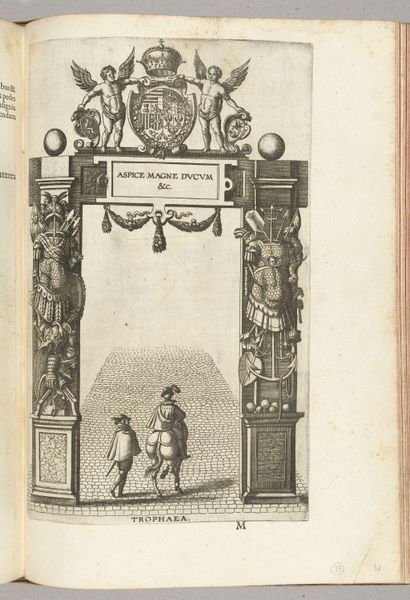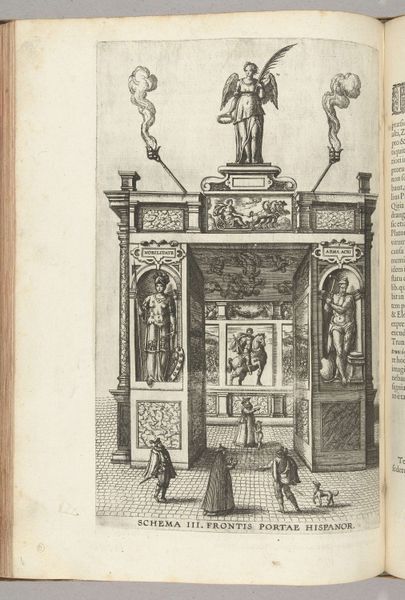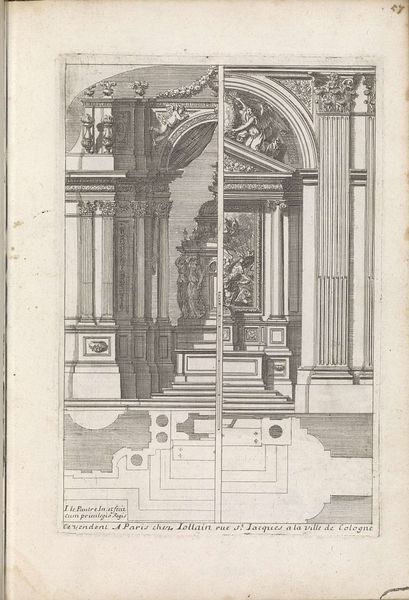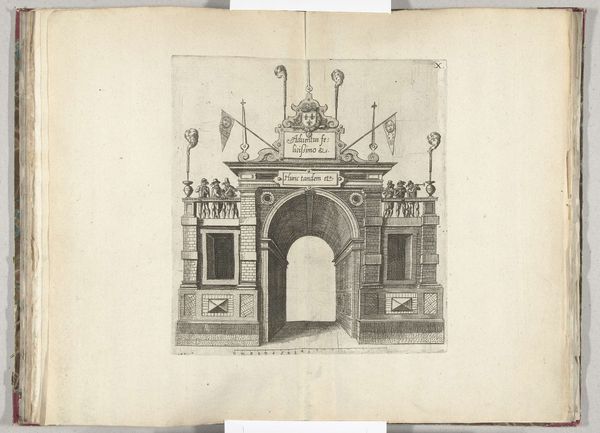
drawing, print, ink, engraving
#
drawing
# print
#
11_renaissance
#
ink
#
cityscape
#
northern-renaissance
#
engraving
#
realism
Dimensions: height 326 mm, width 201 mm
Copyright: Rijks Museum: Open Domain
Curator: This is an engraving by Pieter van der Borcht the Elder, titled "Entry Through the Emperor's Gate, 1594." The work, executed in ink, dates to around 1594-1595. Editor: It's incredibly detailed! The density of the lines creates such a striking contrast and a very impressive sense of depth. The cobblestones of the bridge, the ripples on the water... all meticulously rendered. Curator: The print is part of a series documenting the triumphal entry of Ernest of Austria into Antwerp. It's a fascinating look into the public spectacles staged to consolidate power. The gate itself is quite remarkable, festooned with imperial iconography and Latin inscriptions. Editor: Yes, the iconography is intense. Note the positioning of those figures atop the gate – they seem to be asserting dominance. From a design perspective, the bridge forms a strong leading line, drawing the eye directly into the city. The artist masterfully balances the architectural precision of the gate with the lively presence of the people. Curator: Absolutely. These public entries were carefully orchestrated events. The "Emperor’s Gate"—or Keizerspoort as it was known—was a temporary structure erected for the occasion, a potent symbol of imperial authority and the Habsburg's control over Antwerp after decades of religious conflict. The swans also evoke associations with grace, beauty, and royal symbolism, very fitting for the Habsburg entry. Editor: There’s an undeniable artificiality to the scene. Everything appears so posed, so carefully arranged, especially those figures on horseback near the arch, although they seem relatively diminutive compared to the gate. This may suggest that it wasn’t an altogether easy fit, the power being represented through this imposed display, dwarfing the population with sheer spectacle. Curator: Precisely. The gate becomes an imposing artifice – it overwhelms everything to proclaim Habsburg legitimacy. This wasn’t simply about Ernest's person but a much broader political message regarding the restoration of order and Catholic authority in the region. This print played a role in disseminating that propaganda. Editor: A masterful study in perspective! Notice how all elements reinforce this central message by pulling focus towards the imperial arch, the embodiment of authority. Curator: It gives us great insight into how art was deployed for political messaging during the Renaissance. Editor: Yes, the stark aesthetic amplifies the staged nature of the piece, a potent reminder that perspective is both artistic and political.
Comments
No comments
Be the first to comment and join the conversation on the ultimate creative platform.
